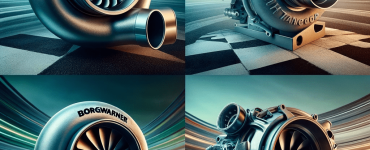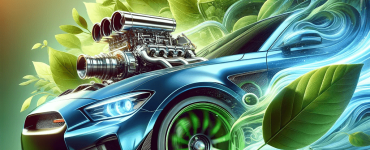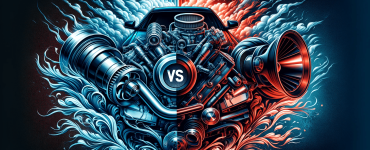Turbocharger vs Supercharger: Suitability for racing
Key Takeaways:
| Aspect | Turbocharger | Supercharger |
|---|---|---|
| Power Source | Exhaust gas turbine | Engine’s crankshaft |
| Efficiency | More efficient, uses waste energy | Less efficient, uses engine power |
| Power Delivery | Delayed due to turbo lag | Immediate, no lag |
| RPM Range | Limited to specific range | Broad range |
| Suitability for Racing | Depends on racing style and engine configuration | Preferred in drag racing for instant power |
Understanding Turbochargers and Superchargers
Both turbochargers and superchargers are designed to increase an engine’s horsepower by forcing more air into the combustion chamber. However, the way they source their power differs significantly. A turbocharger uses exhaust gas to spin a turbine, thereby compressing air into the engine. In contrast, a supercharger is mechanically driven by the engine’s crankshaft, usually connected via a belt.
Turbocharger: Pros and Cons
Pros:
- Increased Power Output: Turbochargers can significantly boost horsepower, often by 30 to 40%.
- Efficiency: They utilize waste exhaust gases, making them more efficient and contributing to better fuel economy.
- Ideal for Smaller Engines: Suited for engines that benefit from higher power without the bulk of a larger engine.
Cons:
- Turbo Lag: There’s a delay in power delivery, known as turbo lag, which can be a disadvantage in racing situations where instant power is needed.
- Limited RPM Range: Turbochargers often work best within a specific RPM range, limiting their flexibility.
- Oil Requirement: They require engine oil for lubrication, demanding more from the engine’s oil supply.
Supercharger: Pros and Cons
Pros:
- Instant Power Delivery: With no turbo lag, superchargers provide immediate power, a significant advantage in racing.
- Works Across a Larger RPM Range: Unlike turbochargers, superchargers are effective over a broader RPM spectrum.
- Predictable Power Output: Superchargers offer a smoother and more predictable power curve, which is advantageous in maintaining control during a race.
Cons:
- Efficiency: They are less efficient as they require engine power to operate.
- Reliability Concerns: High pressures and temperatures can affect engine longevity, especially if stock internals are used.
Suitability for Racing
The choice between a turbocharger and a supercharger largely depends on the type of racing and the specific needs of the vehicle. Turbochargers might be more suitable for races that don’t require instant power off the line but benefit from high efficiency and power at specific RPMs. On the other hand, superchargers, with their immediate power delivery, are traditionally favored in drag racing scenarios where quick starts are crucial.

In conclusion, both turbochargers and superchargers have their unique advantages and drawbacks. The decision on which to use for racing hinges on the specific requirements of the race and the vehicle’s setup. Whether you’re looking for efficiency or immediate power delivery, understanding these differences is key to optimizing your vehicle’s performance on the track.
Turbocharger vs Supercharger: Racing Suitability Q&A
| Question | Turbocharger | Supercharger |
|---|---|---|
| What is the primary mechanism? | Utilizes exhaust gas to spin a turbine, compressing air into the engine. | Mechanically driven by the engine’s crankshaft, usually connected via a belt. |
| What are the efficiency levels? | More efficient as it uses waste exhaust gases. | Less efficient, requires engine power to operate. |
| How is the power delivery? | Delayed power delivery due to turbo lag. | Immediate power delivery without lag. |
| What is the RPM range effectiveness? | Best within a specific RPM range. | Effective over a broader RPM spectrum. |
| How does it affect horsepower? | Can increase horsepower by 30-40%. | Can increase horsepower by 30-50%. |
| What are the pros for racing? | Higher efficiency, suitable for races not requiring instant power off the line. | Immediate power delivery, preferred in drag racing for quick starts. |
| And the cons for racing? | Turbo lag can be a disadvantage in races requiring instant power; limited RPM range. | Less efficient; reliability concerns due to high pressures and temperatures on the engine. |
| Is it suitable for smaller engines? | Yes, ideal for smaller engines. | Not ideal for smaller engines. |
| What about fuel economy? | Contributes to better fuel economy due to efficient use of exhaust gases. | Less fuel efficient as it draws power from the engine. |
| Are there any unique sounds? | Produces a satisfying “whoosh” sound. | Characterized by a distinctive whine as air is compressed. |




